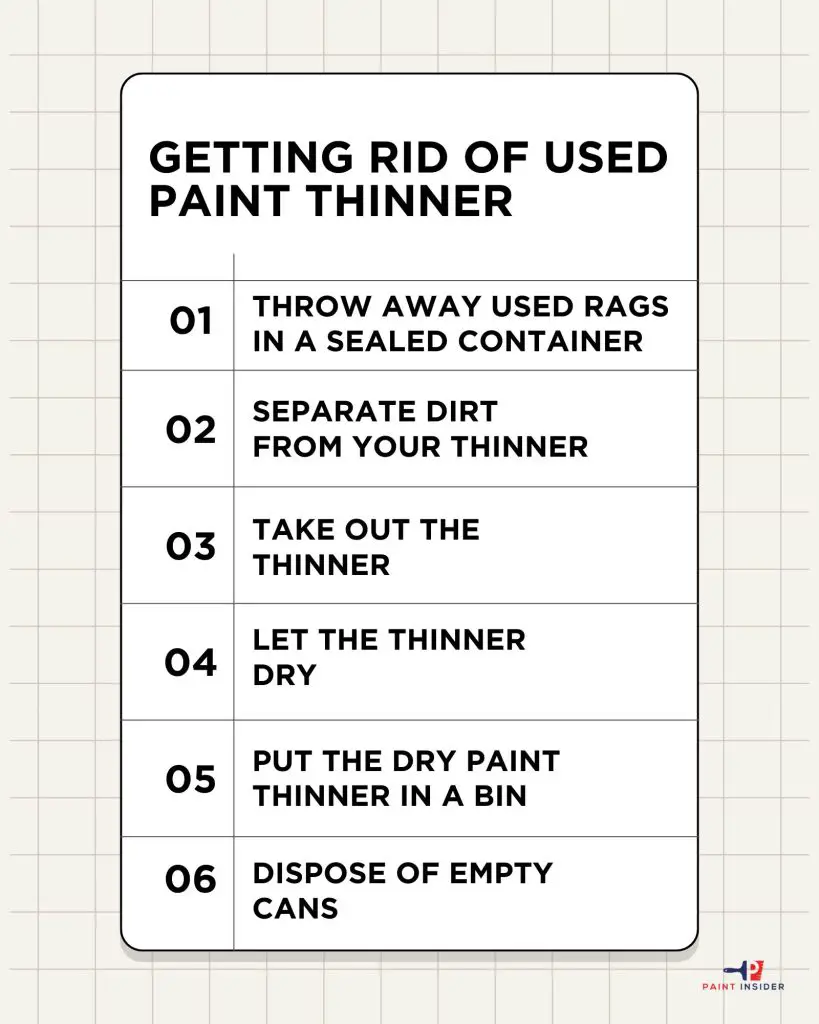If you are a painter, understanding how to dispose of used paint is essential. Read on for more insight on how to dispose of used paint thinner in an ideal way.
introduction: Importance of Proper Paint Thinner DisposalI
Proper disposal of paint thinner is important for protecting the environment and community health. Many people may not know that paint thinners, which contain harmful chemicals, can seep into the soil and water if thrown away incorrectly. This can harm plants, animals, and people living nearby. By learning how to dispose of used paint thinner properly, you help create a cleaner and safer environment.
2 Effective Ways To Dispose of Used Paint Thinner
There are many ways to dispose of used paint thinner. However, two methods stand out, as will be discussed below. Depending on the land laws, you should dispose of any used substance such as paint thinner to avoid harming the environment. Keep reading to discover more information about this topic. To begin our discussion, we should try to understand the forms of paint thinners used.
- Acetone: This is a solvent that is readily available in dealer stores. Nail polish remover is one form of acetone.
- Mineral spirits: They comprise petroleum products. Note that you can use mineral spirits in place of turpentine.
- Toluene: This is a natural solvent that can also be available in petroleum. Note that toluene is highly toxic.
- Turpentine: Our primary concern here is turpentine which is also a constituent product of petroleum used to thin paints; You can also harvest turpentine from trees.
“related topic: Acetone vs Paint Thinner.”
Supplies Needed
- Hosepipe
- Piece of paper
- Glass container
- Sawdust
- Plastic bag
1. Getting rid of Used Paint Thinner:
If you have a lot of used paint thinner and you are wondering how to get rid of it, worry no more because the steps highlighted below will guide you through the whole exercise.

Step 1: Throw away used rags in a sealed container
It would be helpful if you considered discarding all the rags you used in your painting project. Note that the rags may contain traces of your paint thinner which catches fire quickly. If you want to bypass all these processes, consider drying your rags entirely in the sun until all the thinner is gone.
Step 2: Separate dirt from your thinner
Once you have used your paint thinner for the first time, you may think it has lost its value. However, you can salvage your thinner, though in smaller quantities, for future use. Devise a way to separate your paint thinner from the dirt so that you can use it in your future projects.
Step 3: Take out the thinner
- One process you can employ to separate art from your thinner is decantation. Allow the dirt to settle on the bottom of your container before pouring your thinner into another container.
- As a golden rule, always be sure to shield your hands from the harmful effects of paint thinner. Use suitable gloves preferably(rubber gloves) to prevent your hands from contacting the thinner.
Step 4: Let the thinner dry
Place the container with the used thinner in the open to dry. Ensure to carry out this process where there is a free flow of air. Because the painter catches fire quickly, ensure there are no flames nearby or anything that can cause a fire.
Step 5: Put the dry paint thinner in a bin
Be sure to let the dirt solidify completely before discarding using waste paper. If you seal the residue properly, you may then give it to waste collectors for disposal. Ensure you use plastic material if you don’t have an old magazine.
Step 6: Dispose of empty cans
As part of conserving the environment, it would be helpful for you to consider throwing away empty cans. Not only are such cans an environmental hazard, but they can also cause forest fires if not correctly disposed of. Note that traces of paint thinner may trigger an inferno under extreme temperatures, so always be cautious when disposing of them.
2. Disposing of Excess Solvents:
Disposing of your paint thinner comes in different ways; you may decide to give your used paint thinner to a friend who needs it or capitalize on the services of waste collectors for disposal. The following tips will be helpful; check them out.
Give the paint thinner away. If you are done with your painting project and feel like you might not need your excess thinner, it would be a good idea to give it to someone else who needs it. Note that this is one of the best methods to get rid of excess and use paint thinner.
Consider hiring waste collectorsCapitalize on the services of the waste collector. If you are unsure of how to dispose of your paint thinner properly, it would be helpful for you to consider using the services of waste collectors to help dispose of the used thinner.
Note that disposing of used paint thinners ensures you are well protected from the harmful chemicals in thinners
Because measuring the exact amount needed to finish your project is complicated, it would be helpful for you to consider reusing your paint thinner if you have it in excess. Take a suitable container and store your excess thinner.
- Be sure to shield your hands from the harmful effects of turpentine by putting on protective gloves. After sealing the bottle properly, ensure you label it to avoid confusing it with another substance.
- Note that if you store it properly, it will likely save you on your subsequent painting project.
Tips Worthy of Mention
- Always purchase the correct quantity of turpentine. It would be a good idea to buy a quantity that will be just enough for your project.
- Avoid dumping your used turpentine on open ground
- As a golden rule, keep any chemicals both used and used from the reach of children and pets
- Do not store your thinner alongside your foodstuffs because you risk contaminating your foodstuffs
- Make sure to use suitable gloves, preferably to prevent your hands from coming into contact with the thinner
It is common knowledge that any used substance should be disposed of properly to avoid problems associated with harmful chemicals. Apart from keeping your workplace clean, disposing of used paint thinners ensures you are well protected from the harmful chemicals in thinners. One foolproof method you can employ to separate dirt from your thinner is decantation. Be sure to let the dirt settle on the bottom of your container before pouring your thinner into another container.
Conclusion:
Knowing how to dispose of used paint thinner properly is crucial for both environmental stewardship and personal safety. By utilizing local hazardous waste collection programs, you can ensure that this toxic substance is handled appropriately, reducing the risk of groundwater contamination and air pollution. Taking the time to educate yourself on these disposal methods highlights your commitment to a healthier planet.
Moreover, consider exploring eco-friendly alternatives in your next project. There are several non-toxic solvents available that not only perform well but also pave the way for a more sustainable crafting experience. As you embark on future DIY endeavors, remember that responsible disposal practices extend beyond paint thinner; they encompass all aspects of home improvement and creativity. By adopting a conscientious mindset today, you’re contributing positively to tomorrow’s environment one project at a time!

